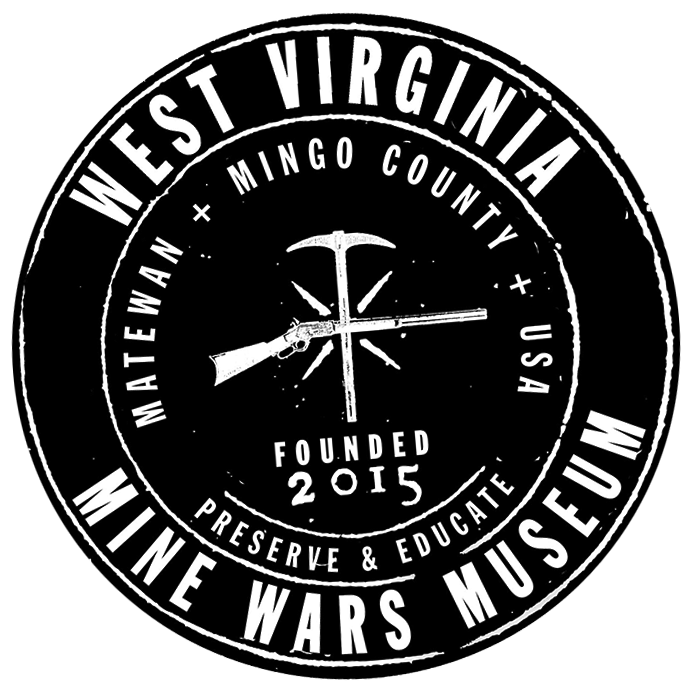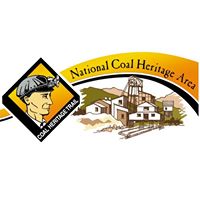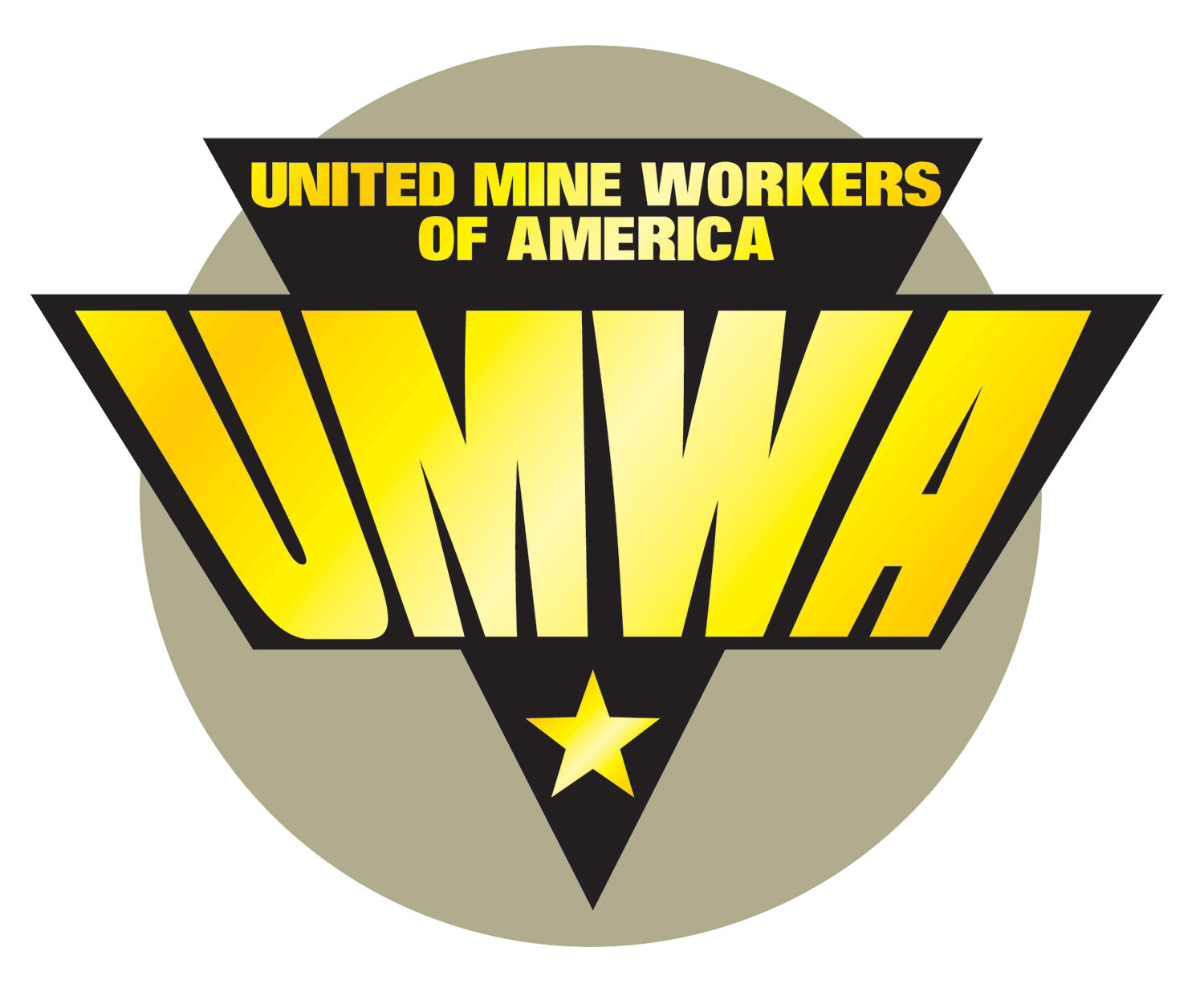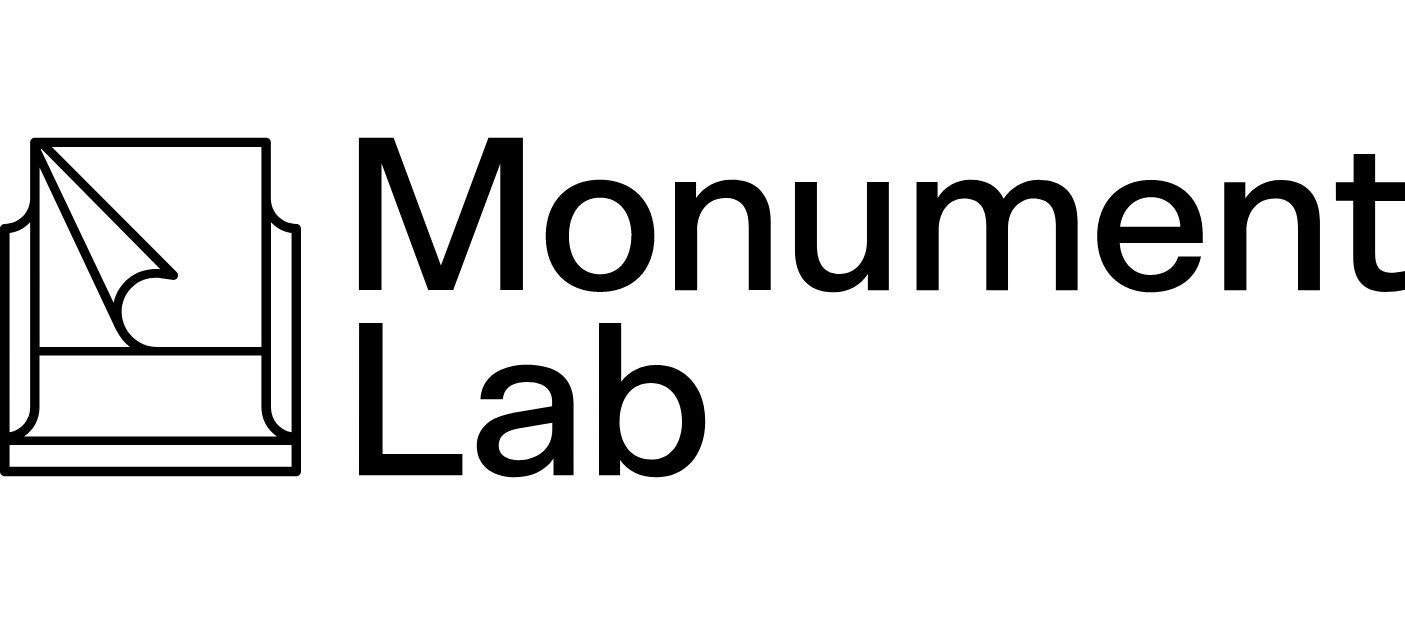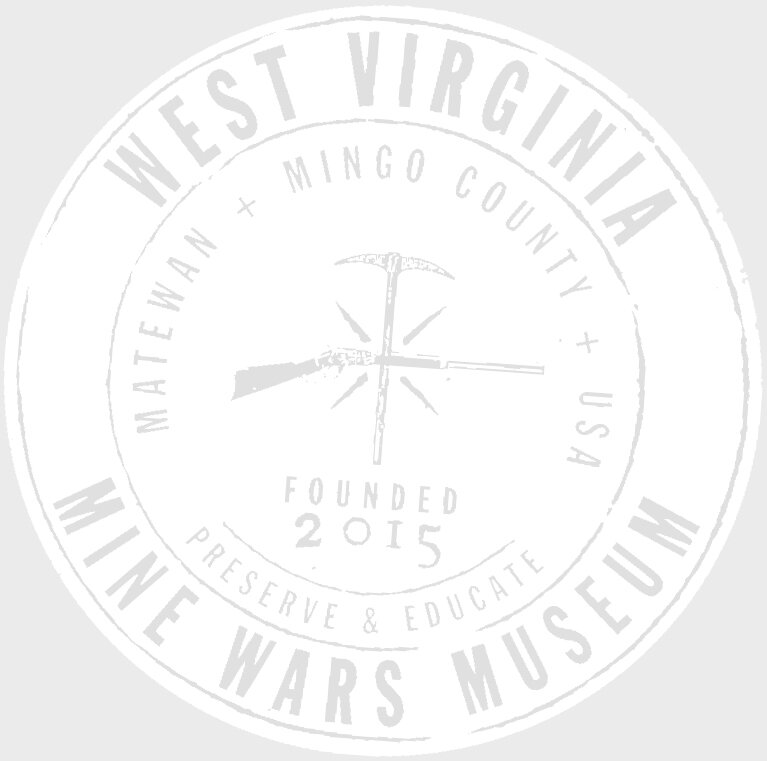“It’s about remembering past struggles when people today are having to fight to keep rights won a century ago...”
In the town of Matewan, the West Virginia Mine Wars Museum sits at the site of a historic battle which erupted in May of 1920, setting into motion a chain of events that led to the largest armed uprising in the United States since our civil war.
For decades after the 1921 Battle of Blair Mountain, the stories of the Mine Wars were whispered around kitchen tables and bullied out of textbooks, surviving as a quiet legacy just under the surface of modern Appalachia. The West Virginia Mine Wars Museum preserves and uplifts the voices of the people who lived these stories of sacrifice, violence, and triumph.
Our museum is located inside the Cecil E. Roberts building, owned and operated by United Mine Workers of America local 1440.
Our independent people's museum is the result of years of work by historians, archaeologists, storytellers and artists, descendents and mine workers -- many of them residents of coalfield communities. Positioned at the intersection of historical and contemporary struggles for justice in the coalfields, we bring visitors into a powerful reckoning with the unique history of human labor in the privatized coal camps of Central Appalachia -- and what it took to build dignity and respect where none was given.
Proudly offering the largest exhibition of Mine Wars history anywhere in the United States, we walk visitors through this legacy with compelling exhibits of archival photos and videos, first-person accounts, rare artifacts and replicas, and detailed timelines placing the events of the Mine Wars era in a global context.
Our work reaches beyond our exhibits to include an expanding archive dedicated to researching the Mine Wars and coalfield life. Curated online exhibits pull from our expertly photographed collection to bring our archives to life for the public. Solidarity Gallery bridges creativity and history through artists’ interpretation of Mine Wars memory. New generations learn powerful truths through our growing collection of educational curriculums and teachers’ resources developed with educators from across the region. Courage in the Hollers, our public monument initiative, brings our work out into the landscape in which it happened.
We have proudly built a people’s museum up from the mountain soil.
The West Virginia Mine Wars Museum is a vital part of the legacy of human rights and justice in labor for working people, in Appalachia and globally.
Winchester 1873 carbine rifle, recovered from Blair Mountain battlefield | collection of Kenny King
photo by Kenny Kemp
Our Mission
The West Virginia Mine Wars Museum preserves and shares stories about the struggles of coal miners and their families for workers’ rights, civil rights, and justice in the early 20th century. As a people’s history museum, we lift up the legacy of a multi-racial, multi-lingual effort to unionize the coalfields. We foster connections between the Mine Wars era and the injustices that still confront working people in Appalachia, the nation, and around the world. The museum educates youth and adults, builds community partnerships, and promotes regional economic development.
The West Virginia Mine Wars Museum is located within the ancestral homelands of the
Cherokee (ᎠᏂᏴᏫᏯᎢ) Shawnee (Shawandasse Tula), Yuchi (Tsoyaha), and Tutelo (Yesan).
We acknowledge that this land has held communities of resistance since time immemorial.
The strength to dissent and defy in the face of oppression in Matewan is older than even the mines. We acknowledge the past, present, and future belonging of Indigenous people on this land. We acknowledge the absences created by relocation from this land and the violence therein. We acknowledge the exploitation of land and people and its beginnings in colonialism.
We also acknowledge and celebrate the spirit of collectivity that is Indigenous to this land. We know the Cherokee principle of ᎦᏚᎩ (Gadugi) that speaks to “working together for one another” is something this land has always held and continues to hold. We welcome and invite continued relationships with the tribal communities original to the land our museum sits on. We hold those communities in gratitude and in solidarity.
Annual Reports
Awards:
National Coal Heritage Area Authority:
Achievement Award for Historical Interpretation, 2015US Senator Joe Manchin: Certificate of Recognition, 2015
Monument Lab, Re:Generation 2022 cohort
